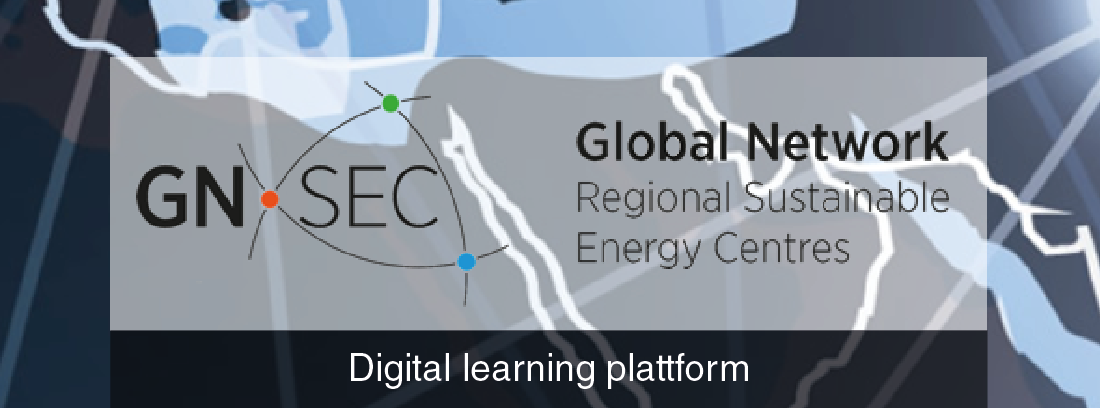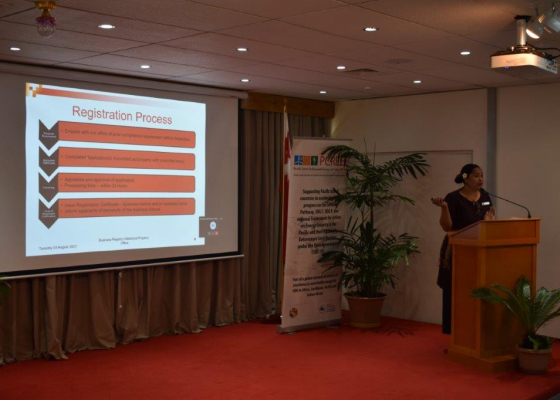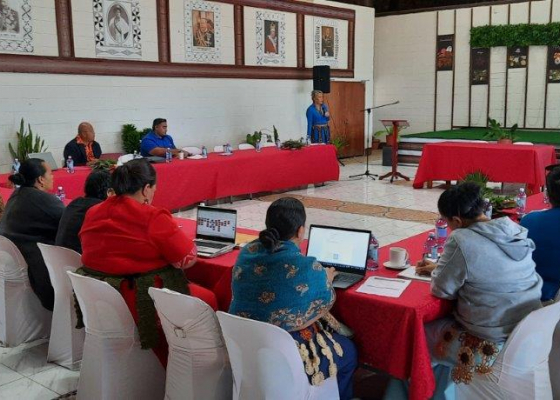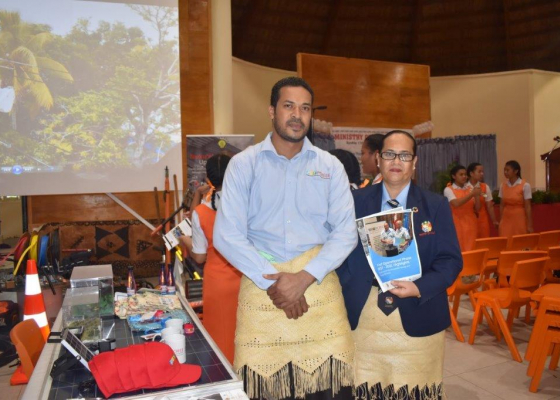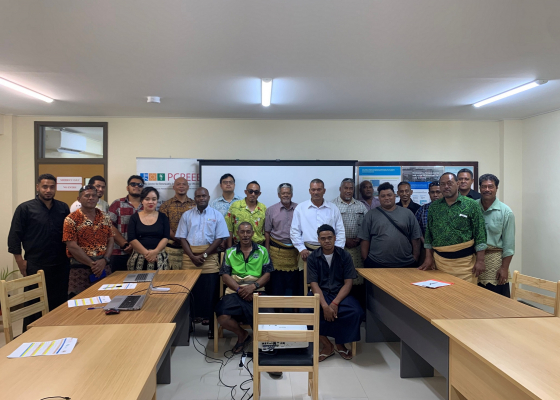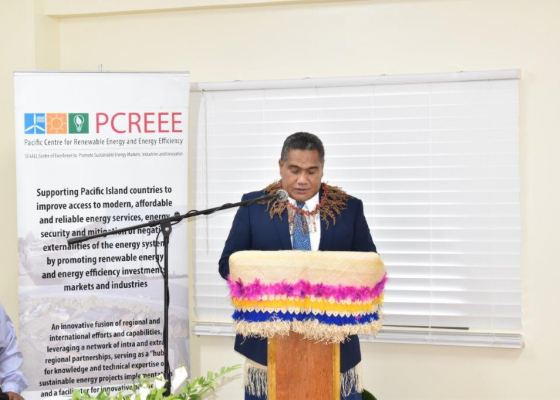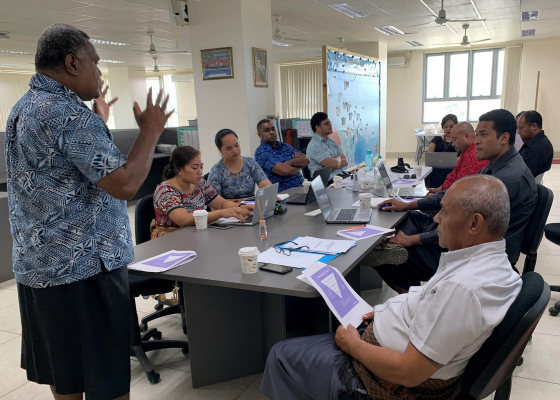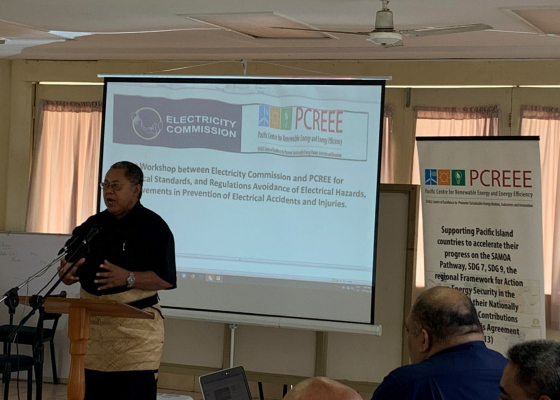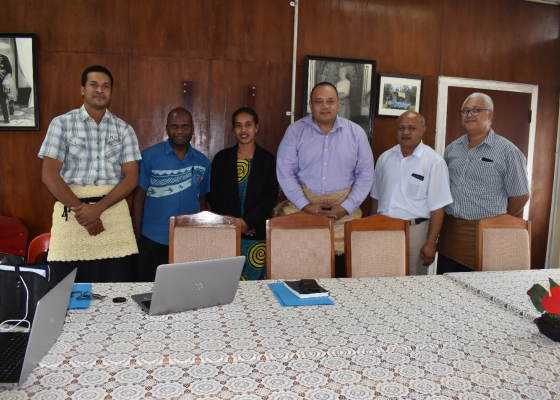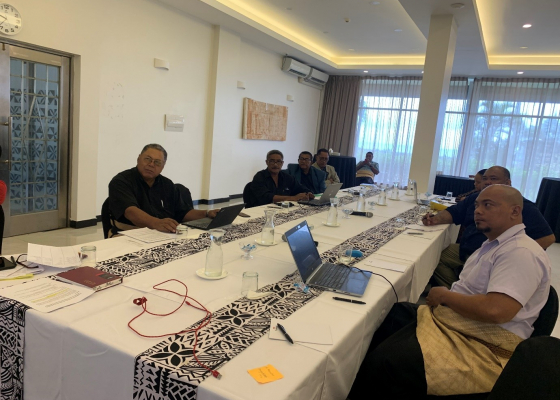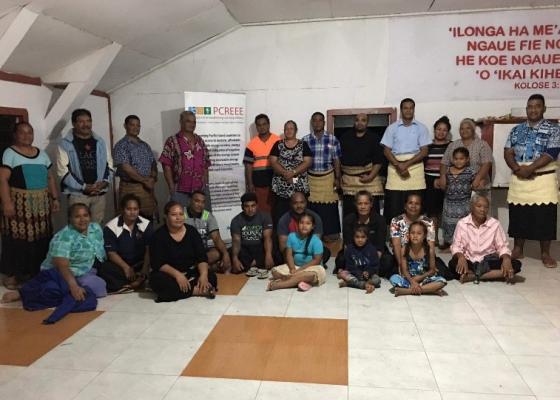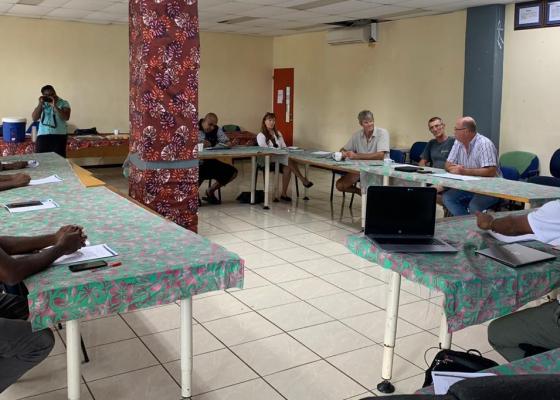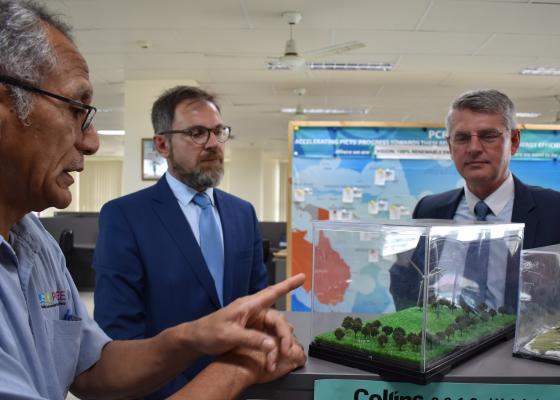Fiji NDC Implementation Roadmap 2017-2030, Setting a pathway for emissions reduction target under the Paris Agreement
This NDC Implementation Roadmap 2017-2030 shall be considered a “living” document in that information expressed in this publication represents the Government of Fiji’s current understanding of the energy sector, and current understanding of mitigation actions (including technology, finance, capacity building, and technical assistance needs), which will
contribute to meeting the targets set out in Fiji’s Nationally Determined Contribution (NDC). The Government of Fiji reserves the right to periodically update the NDC Implementation Roadmap 2017-2030, as may be needed, to ensure validity, transparency, and accuracy over time. Most notably, the Government of Fiji understands that not all of Fiji’s renewable energy resources are mapped in detail, nor are all mitigation actions fully investigated, and that the inclusion of new or improved technology, and its costs over time, will have an impact on future national planning.
The NDC Implementation Roadmap 2017-2030 was developed under the guidance of the Ministry of Economy with support from the Global Green Growth Institute.
Executive summary:
Fiji’s current Nationally Determined Contribution (NDC) is specific to the energy sector both in terms of a GHG (greenhouse gas) baseline, with 2013 as the reference year, and in terms of potential mitigation actions. The overall mitigation target in the NDC is to reduce CO2 emissions by 30% from a BAU (Business As Usual) baseline scenario in 2030, by striving to reach 100% renewable energy power generation and through economy-wide energy efficiency.
The goal of the NDC Implementation Roadmap 2017-2030 is to provide a temporal pathway with concrete mitigation actions and financing needs to achieve the transformational change called for under the NDC.
In the NDC Implementation Roadmap, mitigation actions under the energy sector are divided between the three sub-sectors of Electricity Generation and Transmission, Demand-Side Energy Efficiency, and Transportation. The implementation of the identified mitigation actions under the Roadmap is divided into short-term (2017-2020), medium-term (2021-2025), and long-term (2026-2030) action periods, whereas all mitigation actions in the Roadmap are closely aligned to existing national policies, strategies, and plans.
The total estimated annual CO2 mitigation achieved by the identified mitigation actions included in the Roadmap amounts to 627,000 tCO2/yr against the BAU baseline in 2030. Where the total investment costs in the energy sector to achieve this level of CO2 mitigation is estimated to be US$ 2.97 billion between 2017–2030, plus the estimated US$ 119 million already invested in mitigation actions between 2014-2017.
Upcoming Events
-
01/19/2026 to 01/23/2026
-
03/02/2026 to 03/03/2026






